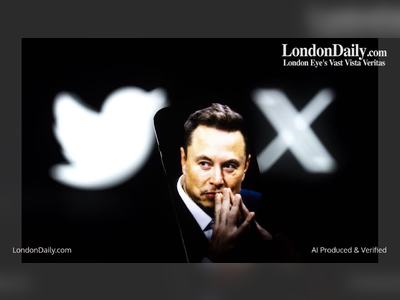
China faces historic test as pandemic stokes fears of looming unemployment crisis
This is the first in a series of six stories exploring the causes and consequences of the domestic unemployment crisis China may face following the coronavirus pandemic. This story examines the scope of the nation’s looming jobless problem and the challenge it poses to the ruling Communist Party.
Years of social progress in China are at risk of being undone as the country grapples with the economic fallout of the coronavirus pandemic, a black swan event that has lashed the world’s second biggest economy and driven unemployment to historic highs.
Over the past few years, China’s labour market stability has been underpinned by the rise in service sector jobs, allowing newly laid-off factory workers to take up employment as delivery drivers or store clerks.
But the coronavirus pandemic has broken this virtuous cycle, fanning the government’s worst fears about massive unemployment and the potential for ensuing social unrest that could undermine its iron-grip on power.
While China began to restart its economic engines in mid-February after months of crippling nationwide lockdowns, a number of sectors are still struggling to recover.
Across the country, it is not uncommon to see stores closing or popular restaurants near universities struggling because students are not yet back at schools.
In some manufacturing hubs, migrant workers are still waiting for factories to reopen, as deadlines for resuming production are pushed out due to declining global demand.
For the first time in decades, China’s labour market is under pressure on multiple fronts, a challenge that was underlined after the country posted its first economic contraction in more than 40 years in the first quarter.
And as China’s job market softens, Beijing’s social development goals, including doubling per capita gross domestic product in the decade to 2020 and eradicating poverty, are looking increasingly shaky.
“Because of the US-China trade war, the downward pressure on China's economy has increased significantly, and the employment situation has continued to deteriorate,” wrote Ouyang Jun and Qin Fang, two economists from Southwestern University of Finance and Economics in Chengdu, in an article late last month.
“After the outbreak of coronavirus, the already difficult task of stabilising employment has become more complicated and hard to manage.”
While anecdotes of business closures and lay-offs are not hard to find on the ground, the true state of unemployment in China is still a matter of debate.
No government data set offers a clear picture of the job market and most economists believe official figures underestimate joblessness.
Among the groups not adequately counted are China’s 149 million self-employed business owners and 174 million migrant workers, who regularly travel from their rural hometowns to find employment in cities.
Unlike developed economies, which typically offer a broad range of employment indicators, China has historically relied on only two figures for unemployment data – both of which have flaws.
Before 2018, Beijing published data on how many urban workers registered with the government when they lost their jobs. Data from local authorities excluded migrant workers who were not born in the city and were therefore not eligible for social benefits there. To be counted as unemployed, people also had to be between the ages of 16 to 59.
The data was detached from the reality of the overall labour market, particularly during the global financial crisis of 2008-2009, when more than 20 million migrant workers became unemployed but the headline jobless rate barely moved.
Since 2018, China has used the monthly survey-based unemployment rate as its main indicator. The data captures all regular urban residents and does not include an upper age limit.
But to be considered unemployed a worker needs to have been actively looking for a job in the past three months and be able to start work within two weeks, conditions that do not cover most migrant workers.
The survey-based jobless rate rose from 5.2 per cent last December to a record high of 6.2 per cent in February, when the pandemic in China was at its worst, before falling back to 5.9 per cent in March, according to the National Bureau of Statistics (NBS).
At the same time, total urban employment plunged 6 per cent in March from January 1, translating into about 26 million job losses.
“This stands in contrast to the 8.3 million net increase of urban employment in 2019, and would be the first contraction in reported urban employment in more than four decades,” Qu Hongbin, chief China economist from HSBC, wrote in a recent note.
About 18.3 per cent of the workforce had been furloughed, taken a pay cut or unpaid leave in the first quarter, according to the NBS.
Many of these jobs will remain under pressure if economic conditions remain weak.
China has announced a modest package of welfare support to help some of its most vulnerable citizens, including migrant workers, but it is limited in scope and will not cover the vast number of workers affected by the virus.
“Unlike in other economies, mainland China has not implemented a broad-based wage protection scheme … like those in the UK, Singapore, or Hong Kong, which require employers to maintain headcount and pay workers. This means that most of the furloughed workers in mainland China have no source of income,” Qu said.
The bulk of those falling through the cracks are migrant workers who have been unable to return to work in cities due to transport restrictions, or self-employed business owners who account for nearly 30 per cent of the workforce in the industrial and service sectors.
Only 123 million rural migrant workers were able to return to jobs in urban areas in the first quarter due to lockdowns and business closures, a fall of 30 per cent from a year earlier.
That has left more than 50 million migrant workers stranded after they returned to their villages for Lunar New Year holiday in January.
Some have picked up low-paying agriculture work at home, but more than half of migrant workers are employed in manufacturing, construction, retail and wholesale – sectors concentrated in urban areas.
Meanwhile, China’s 149 million self-employed workers – ranging from owners of family-run fruit and vegetable shops to neighbourhood hardware stores – have watched their income tumble on average 7.3 per cent in the first quarter, and a steeper 12.6 per cent in urban areas, the statistics agency said.
Due to the wide-ranging impacts of the virus on China’s economy, the ability of workers to transition from manufacturing jobs to new positions in the service sector is becoming increasingly difficult.
Service sector mainstays like tourism and hospitality are under major pressure.
Domestic tourism revenues dropped 60 per cent during the Labour Day holiday in early May from a year earlier, while restaurants have seen revenues cut in half, according to a survey by the China Hospitality Association.
Many food businesses have begun offering delivery services to make up for losses from a lack of dine-in customers, but more than 45 per cent said orders were lower in April than in February, implying a slow recovery in consumer spending.
Overall, revenues at restaurants have only recovered to around 60 per cent of the pre-coronavirus levels, according to data from Hualala, an ordering system used by many Chinese restaurants.
More than a third of restaurant owners have closed some, if not all, of their stores and 40 per cent have been forced to lay off workers, according to the hospitality association survey.
A separate April survey of 300 hotels by the China Hospitality Association found that a quarter had cut at least 20 per cent of their employees, leading to an overall headcount reduction of 18 per cent from a year earlier.
“It remains to be seen how Chinese consumers will adapt to the ‘new normal’ and how quickly there is a recovery from the export shock,” said Yao Wei, chief China economist at French bank Societe Generale.
“If exports fail to recover in the second half of the year and consumers remain highly cautious about visiting restaurants, retail stores and tourist sites, the total number of unemployed could remain much higher at around 30 million at the end of this year.”
Nearly 112 million people were employed directly or indirectly in supply chains that supported exports, according to a study published by the Ministry of Commerce last year.
Larry Hu, chief China economist for Macquarie Group, estimated the unemployment rate could surge to 9.4 per cent by the end of the year.
“As a starting point, one could think about the labour market in terms of new and the existing jobs. China had 442 million urban jobs as of the end of 2019 and has to add 8 million new jobs this year to keep the unemployment rate roughly unchanged,” Hu said.
“In our baseline scenario, new job creation will be 6 million lower than last year and loss of existing jobs will be 14 million. In other words, the total amount of urban jobs this year will be 20 million lower than the normal trend.”
Compounding China’s dreary employment outlook are the 8.7 million students who will graduate this year from universities and colleges.
On the popular social media platform Douban, a topic called “graduates in the epidemic” has garnered more than 700 posts and generated 1.5 million views.
One finance graduate, who secured a job last fall before the virus outbreak started, sent an encouraging note.
“Compared with those who are looking for jobs this spring, I am relatively lucky. I hope that you don’t underestimate yourself or regret your mistakes. The opportunity is there for those who are prepared.”










